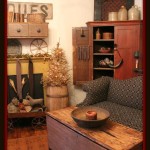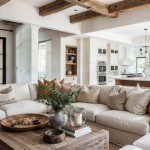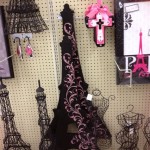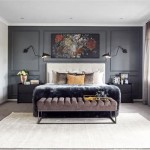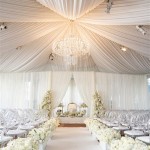How to Decorate a Baby's Room in Childcare
Creating a welcoming and stimulating environment for infants in childcare is crucial for their development and well-being. A thoughtfully designed baby room can foster a sense of security, encourage exploration, and support learning. This article will provide a comprehensive guide to decorating a baby room in a childcare setting, focusing on safety, sensory stimulation, and practicality.
Safety First: Prioritizing a Secure Environment
The primary concern when decorating a baby room in childcare is safety. Infants are particularly vulnerable, so every element must be carefully considered. Here are some essential safety guidelines to follow:
- Choose Non-Toxic Materials: Opt for paints, furniture, and toys made with non-toxic materials to minimize the risk of chemical exposure. Look for products labeled with certifications like GREENGUARD or ASTM F963, which indicate they meet safety standards for children's products.
- Secure Furniture: Ensure all furniture, including cribs, changing tables, and storage units, is securely anchored to the wall to prevent tipping. Regularly check for loose screws or bolts and tighten as needed.
- Avoid Small Objects: Keep all small objects, such as buttons, beads, or toys with detachable parts, out of reach of infants. These items pose a choking hazard.
- Properly Store Cleaning Supplies: Store cleaning supplies in a locked cabinet or out of reach of infants to prevent accidental ingestion or exposure to harmful chemicals.
- Install Smoke Detectors and Fire Extinguishers: Ensure the room is equipped with working smoke detectors and a fire extinguisher.
- Regularly Inspect for Safety Hazards: Conduct routine inspections to identify and address any potential safety hazards, such as loose wires, broken toys, or cracked furniture.
Sensory Stimulation for Infant Development
Infants are constantly learning and developing through their senses. Creating a stimulating environment that appeals to their senses can play a crucial role in their cognitive and social-emotional growth. Consider incorporating these sensory elements into the room design:
- Visual Stimulation: Use colors, patterns, and textures to create visual interest. Choose bright, vibrant colors that contrast with the walls to stimulate the infant's vision. Incorporate mobiles with colorful shapes and textures, hanging mirrors, or posters with age-appropriate images.
- Auditory Stimulation: Create a calm and soothing ambiance with gentle music or nature sounds. Choose songs with simple melodies and repetitive lyrics that infants can easily follow. Use musical toys, rattles, and shakers to encourage sound exploration.
- Tactile Stimulation: Provide a variety of textures for infants to explore. Include soft blankets, textured toys, and soft, colorful rugs. Allow infants to touch different materials and experience various sensations.
- Olfactory Stimulation: Introduce pleasant scents to the room, such as lavender or chamomile, to promote relaxation and create a calming atmosphere. Avoid strong or overpowering fragrances that might irritate sensitive noses.
- Taste Exploration: While taste is not directly stimulated within the room, the environment should create a positive association with feeding. Ensure the feeding area is clean, comfortable, and inviting.
Practical Considerations for Childcare
While aesthetics and safety are essential, practicality is critical for a successful childcare setting. Consider these factors to make the room functional and efficient:
- Spacious Layout: Create a spacious and open layout to allow for easy movement and access to different areas of the room. Ensure there is sufficient space for diaper changes, feeding, play, and rest.
- Easy-to-Clean Surfaces: Choose durable and easy-to-clean materials for floors, walls, and furniture. Choose washable fabrics for blankets and cushions. Infants are prone to messy accidents, so easy-to-clean surfaces are essential.
- Appropriate Furniture: Select age-appropriate furniture, such as cribs with adjustable heights, changing tables with safety straps, and comfortable seating for caregivers. Ensure the furniture is of high quality and meets safety standards.
- Organized Storage: Create a clear and organized storage system for toys, supplies, and other items. Use labeled bins and shelves to keep the room looking tidy and to make it easier for caregivers to find what they need.
- Adequate Lighting: Provide adequate lighting throughout the room, using natural light whenever possible. Use soft, diffused lighting for nighttime activities and ensure there are no harsh glare in the room.
- Appropriate Temperature: Ensure the room is well-ventilated and maintains a comfortable temperature. Create a temperature-controlled environment that provides a comfortable temperature for both infants and caregivers.
By following these guidelines, childcare providers can create a safe, stimulating, and functional baby room that promotes infant development and well-being. Remember to regularly review the room's design and make adjustments as needed to ensure it continues to meet the changing needs of the infants in care.

Nursery Room Ideas Childcare Rooms

Designing Playful Learning Spaces For Babies And Toddlers

Pin On Daycare Ideas

The Stables Baby Room Evolution Childcare

Designing Playful Learning Spaces For Babies And Toddlers

The Willows Baby Room Evolution Childcare

Daycare Ideas Interior Design Inspiration For Your Childcare Center

Nursery Learning Environment Explore Our Rooms

Infant Room Daycare Classroom Decor

Designing Playful Learning Spaces For Babies And Toddlers
Related Posts

